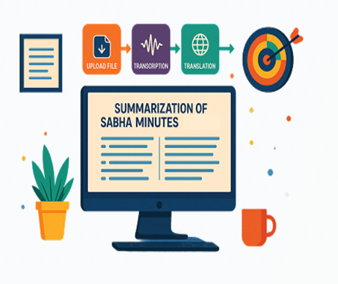The Ministry of Panchayati Raj has rolled out a series of digital reforms aimed at strengthening governance in Gram Panchayats, introducing artificial intelligence (AI), geo-spatial mapping and citizen-facing mobile platforms to make rural administration faster, more transparent and inclusive.
In August 2025, the ministry launched SabhaSaar, an AI-powered meeting summariser that generates structured minutes of Gram Sabha proceedings from audio or video recordings in real time. Linked to the Bhashini language platform, the tool works in 14 Indian languages, enabling accessibility across diverse regions and reducing delays in documentation.
Under the SVAMITVA scheme, launched in 2020 to provide rural households with legal ownership papers for residential properties, drone surveys have been completed in 3.23 lakh villages, while 2.63 crore property cards have been prepared in 1.73 lakh villages as of August 2025. Ministry said the programme has empowered villagers with secure land titles, enabled easier access to bank loans, boosted Panchayat revenues and improved dispute resolution.
The government is also expanding rural connectivity through the BharatNet project, which aims to provide high-speed broadband to every Gram Panchayat. Over 13 lakh fibre-to-the-home connections have been commissioned, supporting services in education, health, governance and agriculture. As of June 2025, nearly 6.26 lakh of India’s 6.44 lakh villages already had internet access via 3G or 4G networks.
Other platforms are reshaping local governance. The eGramSwaraj portal brings planning, budgeting, accounting and monitoring functions of Panchayats onto a single digital platform, covering more than 2.7 lakh institutions. The Meri Panchayat mobile app allows citizens to track local budgets, projects, services and elected representatives in real time. Panchayat NIRNAY digitises Gram Sabha meetings and decisions, while Gram Manchitra provides geo-spatial planning tools for evidence-based development.
Recognition has also followed. At the National Awards for e-Governance 2025, a new category was introduced for grassroots initiatives, with Gram Panchayats in Maharashtra, Tripura, Gujarat and Odisha among those honoured for adopting digital platforms to improve transparency and service delivery.
Ministry said these initiatives reflect the government’s broader push under Digital India and Atmanirbhar Bharat to use technology for grassroots empowerment. By bridging gaps of language, information and distance, the reforms are being positioned as a turning point in rural governance, giving citizens a bigger role in decision-making and building stronger foundations for a “Digital Bharat.”










